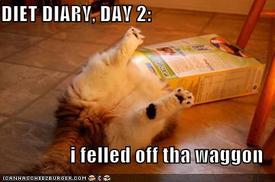TDEE is everything
Options
Replies
-
bump - thanks0
-
bump!0
-
Bump0
-
Bump0
-
Thanks for the post. Now to figure out the heavy weight program part.... halfway there!
 0
0 -
-
People are still bumping this thread. Awesome.
 0
0 -
Thanks for the info!0
-
I've asked this a million times and still never found a satisfactory answer, so here goes nothing again. If your exercise program is heavy on lifting, how do you accurately calculate the calories for that?
I sometimes see people with numbers under weightlifting for burning over 1000 calories but when I'm lifting, My HR (according the moniter) barely ever breaks 100.. unless I'm doing low weights, many reps, small to no rest inbetween sets and STILL no way my HR is getting to the range of burning over 1000 cals in an hour or a little over an hour. Do you just iggnore strength training alltogether in terms of exercise calories?0 -
Am I right to basically stay BETWEEN my BMR and my TDEE? For me that is 1600 - 1800 calories

Someone please let me know! x0 -
Yes, I think if you want to lose you can reduce your TDEE 15-20%Am I right to basically stay BETWEEN my BMR and my TDEE? For me that is 1600 - 1800 calories
Someone please let me know! x0 -
I've asked this a million times and still never found a satisfactory answer, so here goes nothing again. If your exercise program is heavy on lifting, how do you accurately calculate the calories for that?
I sometimes see people with numbers under weightlifting for burning over 1000 calories but when I'm lifting, My HR (according the moniter) barely ever breaks 100.. unless I'm doing low weights, many reps, small to no rest inbetween sets and STILL no way my HR is getting to the range of burning over 1000 cals in an hour or a little over an hour. Do you just iggnore strength training alltogether in terms of exercise calories?
I think HRMs cannot measure calorie burn on weight-lifting very well, but I have seen people with the Body Media Fit and they can get more accurate data, I think. I follow the calorie requirements in New Rules of Lifting for Women, someone posted it here:
http://www.myfitnesspal.com/topics/show/538943-how-to-calculate-calorie-goals-according-to-nrolfw0 -
Yes, I think if you want to lose you can reduce your TDEE 15-20%Am I right to basically stay BETWEEN my BMR and my TDEE? For me that is 1600 - 1800 calories
Someone please let me know! x
Correct. And depending on how close to goal weight you are, if you are going for this method, you may have to get to 10% even.
Because what you want to happen on daily avg is, if you took eating level and took out known workout calorie burns, you should still be above BMR by 100-200.
And less you have to lose, smaller range you have to play with. Unless you just have a massive amount of low-key daily activity outside exercise, which is where you want your real deficit coming from.0 -
And the amount above the BMR, should that be for the week or on a daily basis?
Yes, I think if you want to lose you can reduce your TDEE 15-20%Am I right to basically stay BETWEEN my BMR and my TDEE? For me that is 1600 - 1800 calories
Someone please let me know! x
Correct. And depending on how close to goal weight you are, if you are going for this method, you may have to get to 10% even.
Because what you want to happen on daily avg is, if you took eating level and took out known workout calorie burns, you should still be above BMR by 100-200.
And less you have to lose, smaller range you have to play with. Unless you just have a massive amount of low-key daily activity outside exercise, which is where you want your real deficit coming from.0 -
I've asked this a million times and still never found a satisfactory answer, so here goes nothing again. If your exercise program is heavy on lifting, how do you accurately calculate the calories for that?
I sometimes see people with numbers under weightlifting for burning over 1000 calories but when I'm lifting, My HR (according the moniter) barely ever breaks 100.. unless I'm doing low weights, many reps, small to no rest inbetween sets and STILL no way my HR is getting to the range of burning over 1000 cals in an hour or a little over an hour. Do you just iggnore strength training alltogether in terms of exercise calories?
Asjerven is correct, HRM's are only valid for aerobic type activities, and bpm within that range, so maybe 90-170.
You can't accurately get calorie counts. Some weight lifting sites I've seen do have calc's where you put in how many reps you do, recover time in-between sets, time inbetween different lifts, ect. That's about the best I'd seen.
So you pay attention a couple times how much time you spend, and then you got a single figure you use until your weight changes.
And even that would be estimate - as someone may not really be pushing themselves as much as the calculator is assuming.
The thing with weight lifting though, you are using muscle stored glucose, so you do want to eat enough to feed/replace that. But the after effects of anaerobic (including true HIIT) is the fat usage later as body recovers. That of course you don't want to feed.
I know Polar has a more expensive model that says it is better for weight lifting, I'll bet what they do is when in that mode, it just doesn't do any calorie calc's for any HR it guesses is in anaerobic zone. So they estimate even on cheaper ones the "Fat burning" and "Fitness" zones, based on who knows what, mine moves around. They probably just don't do the calorie count for "Lifting" zone.
Because you are correct, even if your HR does get up there, mine can get up to 160 on the 3rd set with only 1 min recovery. That calorie burn for that 160 dropping back to 120 based on anaerobic is much smaller compared to doing say spin bike at 160 and dropping back to 120 while aerobic.
The only good thing is that perhaps, your total burn during the workout, and post-workout for recovery, is around the value given on the HRM for during the workout.
Problem being, you don't have to feed that entire amount, probably 25% of it, with good carb/protein mix within 30 min.
So either log the whole thing and only eat back 25% of those cal's, or manually adjust the estimate to 25%.
And wear a HRM just a couple times on different workout style days to see what the avg cal per hr is, and just do the math for future workouts. Likely won't change enough to matter.0 -
And the amount above the BMR, should that be for the week or on a daily basis?Correct. And depending on how close to goal weight you are, if you are going for this method, you may have to get to 10% even.
Because what you want to happen on daily avg is, if you took eating level and took out known workout calorie burns, you should still be above BMR by 100-200.
And less you have to lose, smaller range you have to play with. Unless you just have a massive amount of low-key daily activity outside exercise, which is where you want your real deficit coming from.
Weekly is fine depending on the workout schedule. You could still use that Future You spreadsheet to keep doing a spot check on a weeks worth of activity, enter in each day eat, each day HRM calorie burn, current weight at start/end of week, and see how you NET above BMR for daily avg. Should be 100-200, bigger gap more intense the workouts.
If you have very intense workouts every day and only 1 rest day, that ends up being a spike day as far as NET calories is concerned, because you went below BMR probably every other day.
Now, only concern to that scenario is, you could easily run out of glucose stores by day 4 if well under BMR and low calorie or low carb. And for workouts on 5 and 6, you would be tearing down muscle for conversion to glucose - not a good result.
In that kind of workout case, I'd say you'd want to NET right at BMR, not under, daily, no matter what. Then your rest day gives recovery to BMR to not lower.
If workout case was a couple spaced workout days, or you did very light cardio day after heavy lifting, then some days dipping below BMR a little, some days higher, rest day good recover, is right on.0 -
Excellent, thank you!0
-
bump for later reading.0
-
Bumpity. Love this stuff.0
-
*Bump*0
Categories
- All Categories
- 1.4M Health, Wellness and Goals
- 391.6K Introduce Yourself
- 43.5K Getting Started
- 259.7K Health and Weight Loss
- 175.6K Food and Nutrition
- 47.3K Recipes
- 232.3K Fitness and Exercise
- 394 Sleep, Mindfulness and Overall Wellness
- 6.4K Goal: Maintaining Weight
- 8.5K Goal: Gaining Weight and Body Building
- 152.7K Motivation and Support
- 7.8K Challenges
- 1.3K Debate Club
- 96.3K Chit-Chat
- 2.5K Fun and Games
- 3.3K MyFitnessPal Information
- 23 News and Announcements
- 941 Feature Suggestions and Ideas
- 2.3K MyFitnessPal Tech Support Questions















